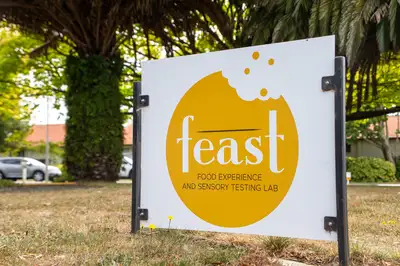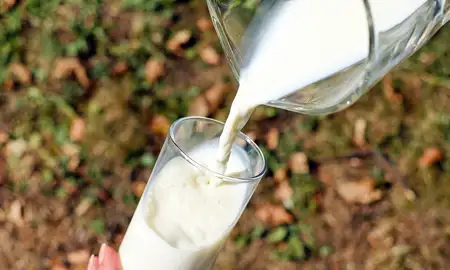
Scientists and technologists are strongly divided about the viability of lab-cultivated meat.
Take some brilliant biochemists, billions of angel investment dollars, a few stem cells from a small chunk of animal flesh, just the right nutrient soup and what do you get? The beginning of one of the most important technological revolutions in history? Maybe. Scientists and technologists themselves are strongly divided about the viability of cultivated meat (CM). But the government and our agricultural industries are taking its development very seriously.
As part of Ministry of Business, Innovation and Employment-funded research into the Consumer Dimension of Future Foods, Fonterra-Riddet Chair of Consumer and Sensory Science at Te Kunenga ki Pūrehuroa Massey University Professor Joanne Hort and Postdoctoral Researcher Caroline Giezenaar, have tested the response to cultivated (aka cultured or cell-based) meat by New Zealand consumers – albeit without the product itself for them to sample.
The theoretical advantages of replacing farmed with cultivated meat are potentially planet-transforming. Millions upon millions of animal lives, the huge tracts of land needed to feed them, the associated billions of tonnes of greenhouse gas emissions and other unwanted effluents could be saved. Meat could be produced locally, anywhere in the world, and more people could enjoy meat’s nutritional advantages. There would be less foodborne illness and zoonotic disease and antibiotics would no longer be needed for farmed animals, helping in the fight against antibiotic resistance.
But how realistic is it to scale up the manufacture of cultivated meat? Will it be safe? What will its carbon footprint be and will it be too costly? A key question is: will anyone want to eat it? Can it ever replicate the taste and texture of grass-fed beef and lamb sizzling and spitting on the barbeque? For the majority, taste and price will ultimately trump moral and environmental imperatives, Professor Hort predicts.

Professor Joanne Hort.
How exactly do they cultivate meat?
Meat – or a loose collection of muscle, fat and connective tissue cells – is cultivated by extracting stem cells from a matchbox-size sample of live muscle tissue, taken from an animal destined for slaughter. These versatile cells will specialise depending on what chemical stimuli they receive, turning into fat, muscle or connective tissue as required. The starter cells must be carefully screened to make sure they don’t harbour disease or genetic faults. Fed with the right mix of nutrients – amino acids, sugars, vitamins, etc. – they will multiply exponentially.
Biochemist and tissue engineer Dr Laura Domigan from The University of Auckland is the Co-Founder and Chief Scientific Officer of Opo Bio, the first company in New Zealand to sell clean starter cells to other researchers and CM start-ups. Despite being a committed pioneer, Dr Domigan confessed that though she is optimistic about the scientific challenges being overcome, the future is uncertain, including consumer acceptance. “You’re selling something completely different,” she says.
As Chief Scientist for the New Zealand Food Safety Science and Research Centre, Distinguished Professor Phil Bremer is particularly interested in the safety aspects of CM, which were traversed in a recent FAO report. He says that while the full range of food safety challenges will not be apparent until the means of producing CM on a commercial scale is better understood, it is important to appreciate that while the products produced may be new, many of the potential food safety issues are not.
He says a hazard analysis and critical control point (HACCP) approach, whereby potential risks are identified, and processes put in place to mitigate them, will be key. This approach will need to be complemented by good hygienic practices and the effective application of risk analysis. Distinguished Professor Bremer’s advice for people interested in producing cell-based products is to start discussing the issues with relevant stakeholders, including regulatory authorities, food safety research providers, equipment designers and manufacturers and the public, from a very early stage in the development process.
Who will eat cultivated meat in New Zealand?
Feast completed a survey of 572 Gen X (41-55) and millennial New Zealanders (25-40), about CM in 2023. A standout result from the survey is that the more respondents knew about cultivated meat, the more likely they were to accept the concept and be prepared give it a try. Awareness of cultivated meat is lower in New Zealand compared with other countries and we have a generally more conservative attitude to novel food processing techniques. As yet, we have no CM start-ups, except for Opo Bio’s starter cell line business, so there is less about it in New Zealand media.

Massey's Food Experience and Sensory Testing Laboratory is located on the Manawatū campus.
Young educated males who were already low consumers of meat, or conversely relatively high consumers of plant-based meat alternatives (PBMAs), were the most positive about CM; older people were generally more negative. Interestingly, 91 per cent were either neutral (51 per cent) or happy to eat it (40 per cent). Participants could readily see how CM would improve animal welfare and environmental sustainability – provided it was consumed as an alternative to conventional meat and not as a replacement for PBMAs. However, that may well be the case to some extent, as regular consumers of PBMAs thought that CM would be a tastier alternative to conventional meat than PBMAs.
Professor Hort says she was not surprised by this finding, which likely reflected current general consumer dissatisfaction with PBMAs. Overall, she says the survey showed that there will have to be a lot more consumer education about cultivated meat.
Republished with permission from Food New Zealand.
Related news
New research sheds light on Chinese consumers’ milk habits
Recent results from a New Zealand government-funded Riddet Institute research programme, NZ Milks Mean More, has provided valuable insights into dairy consumption in China.

Pop the bottle: turning green into gold for Kiwi winemakers
Turning wine grapes destined to rot on the ground into value-added products is the focus of a new research project led by Dr Amanda Dupas de Matos, Consumer Sensory Researcher in the Food Experience and Sensory Tasting laboratory , aimed at helping winemakers reduce the amount of grapes going to waste.
